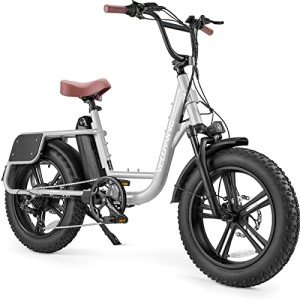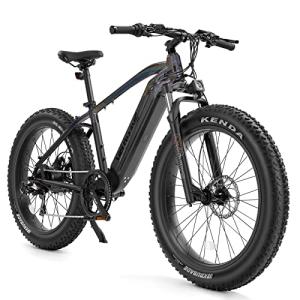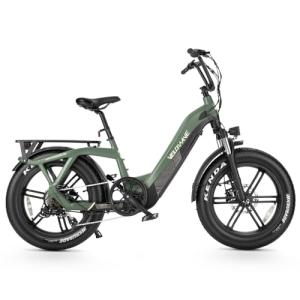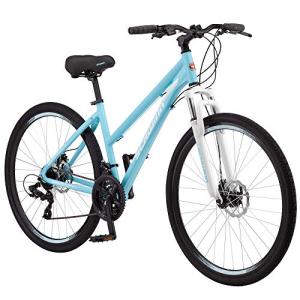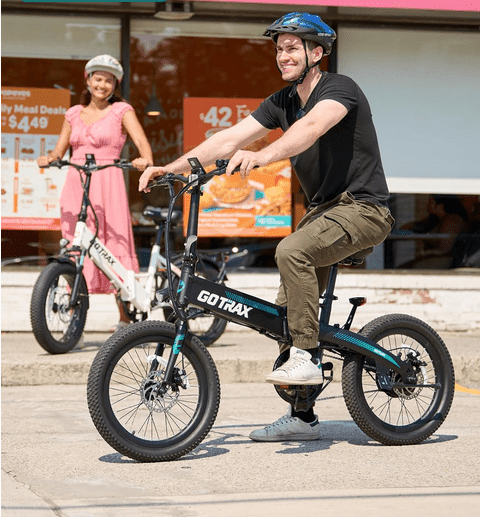"Electric Bikes vs. Traditional Bikes: A Comparative Analysis."
Are you in the market for a new bike but unsure whether to go with an electric or traditional model? With so many different options available, it can be tough to make a decision that suits your needs. That's why we've created this comparative analysis of electric bikes versus traditional bikes. We'll take a look at the advantages and disadvantages of each type of bike, including factors such as efficiency, cost, performance, safety, maintenance, physical exercise, and distance traveled. By the end of this article, you should have a better idea of which kind of bike is right for you!

Electric Bikes
Electric bikes, also known as e-bikes, are becoming increasingly popular in urban areas. They use a battery-powered motor to assist the rider’s pedaling and provide an extra boost to get up hills or travel long distances. One of the most significant advantages of electric bikes is their efficiency – they require less effort from the rider to achieve faster speeds compared to traditional bikes.
Another benefit of e-bikes is their cost comparison over time - although they may be more expensive initially, their low maintenance and fuel costs make them cheaper in the long run than traditional bikes or cars. Moreover, electric bikes are environmentally friendly because they emit zero emissions while traveling.
E-bike batteries have varying ranges depending on factors such as terrain and speed; it is essential for riders always to keep track of battery life before embarking on a journey. Additionally, unlike traditional bicycles that rely solely on physical exercise, e-bikes offer options for riders with limited physical abilities or those who want an easier way to commute without breaking into a sweat.
Electric bikes have numerous benefits over traditional bicycles-They’re efficient yet environmentally friendly machines that offer great value for money while maintaining bike performance levels
Traditional Bikes
Traditional bikes have been around for over a century. They are the most common type of bike found on roads and trails all over the world. These bikes come in different sizes, styles, and designs to fit people of various ages and heights.
One advantage of traditional bikes is their affordability compared to electric bikes. You can get a quality traditional bike for as low as $100. This makes it easy for anyone looking to buy a bike without breaking the bank.
Another benefit of traditional bikes is that they don't require batteries or any other power source to function. The rider provides all the energy needed to move forward, making them an eco-friendly option.
Traditional bikes also offer great physical exercise benefits since they require more effort from riders to cycling uphill or against strong winds. Even with advancements in technology, nothing beats good old-fashioned pedal power when it comes to fitness.
However, one disadvantage of traditional bikes is that they may not be suitable for long-distance travel due to their reliance on human-powered pedaling alone. Riders may encounter issues such as fatigue or exhaustion after cycling long distances.
In terms of maintenance, traditional bikes are easier and cheaper to maintain than electric ones since there's no need for regular battery replacements or charging stations.
While electric bikes offer convenience and speed advantages over their traditional counterparts, you can never go wrong with owning a classic bicycle - affordable, environmentally friendly, and offers excellent health benefits through physical exercise!
Advantages and Disadvantages of each type of bike
Electric bikes and traditional bikes offer different advantages and disadvantages for riders. Electric bikes provide greater bike efficiency, which is a significant plus point for commuters who want to save time during their daily commute. E-bikes are also environmentally friendly because they do not emit any harmful pollutants.
However, electric bikes come with a higher price tag than traditional bicycles due to the added expense of the battery pack and motor. These components can make e-bikes heavier than conventional ones, making them more difficult to handle on steep inclines or rough terrain.
On the other hand, traditional bicycles are much cheaper compared to e-bikes, allowing people from all walks of life to own one. They require less maintenance since they don’t have electronic parts that need frequent servicing or replacement.
Traditional bikes promote physical exercise as it requires riders to pedal manually while riding them regularly increases endurance levels. However, this could be considered a disadvantage by some as it may cause exhaustion in longer rides or hilly terrains.
Both types of bicycles have their unique selling points based on individual needs such as distance traveled required, personal preference, safety concerns, and battery life among others. Ultimately, it comes down to what each rider values most when choosing between an electric bike or a traditional bicycle
Which type of bike is better for you?
When it comes to choosing between an electric bike and a traditional bike, the decision ultimately depends on your personal preferences and needs.
If you're looking for convenience and ease of use, an electric bike may be the way to go. E-bikes allow riders to travel longer distances with less effort, making them perfect for commuting or leisurely rides without breaking a sweat. Plus, their battery-powered motor provides assistance when needed, making uphill climbs a breeze.
On the other hand, if you enjoy physical exercise and want full control over your ride's performance, then a traditional bike may be more suitable for you. Traditional bikes require pedaling power from the rider alone and are ideal for those who love challenging themselves physically.
Cost is also something that should be considered when choosing between these two types of bikes. While e-bikes can have a higher upfront cost due to their added features such as batteries and motors, they tend to have lower maintenance costs in the long run compared to traditional bikes.
The decision between electric or traditional bikes comes down to individual preference based on factors such as desired level of physical exertion during rides; distance traveled; battery life; safety measures taken while cycling (like wearing helmets); type of terrain ridden through regularly (hills versus flat roads), etc.
Conclusion
To sum up, both electric bikes and traditional bikes have their own unique advantages and disadvantages. Electric bikes offer greater efficiency, more benefits of physical exercise, long-distance travel capabilities, and lower maintenance costs but come at a higher cost initially. Traditional bikes are less expensive upfront, provide better performance on rough terrain, and do not require charging but can be physically demanding to ride.
Therefore, the choice between an electric bike or a traditional bike comes down to personal preference, needs, and budget. If you're looking for a convenient mode of transportation that is also eco-friendly while providing some level of assistance in pedaling without compromising on exercise levels then an e-bike may be the perfect solution for you! But if you're someone who enjoys cycling as a form of rigorous physical activity or wants to save money on initial purchase costs then a traditional bike might be your best bet.
No matter what type of bike you choose – always remember to practice safe riding habits by wearing appropriate safety gear like helmets and following traffic rules diligently. Happy Biking!
Remember Be Safe and Ride Safe!
Recent Related Articles:
5 Common E-Bike Maintenance Mistakes to Avoid
Can You Ride an Electric Bike in The Rain?
Introduction: Unleash Your Adventures with the Perfect Electric Bike


